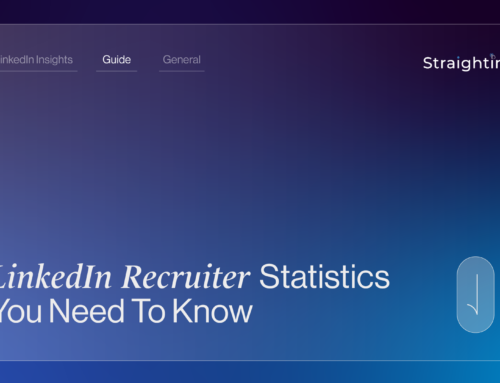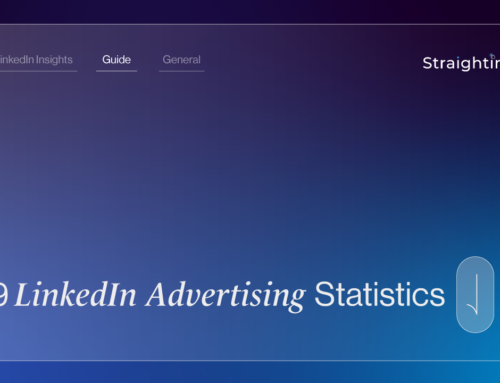LinkedIn ads might seem a bit on the pricey side, but there’s a reason for it. Firstly, it’s not a traditional media channel like Google Ads or Bing, where users might be looking for information or entertainment.
LinkedIn is an exclusive network where people are looking to do business with one another. It’s not just about ads; it’s about building relationships, which makes it unique to other digital marketing channels. On top of that, more than 1 billion professionals actively use LinkedIn worldwide. This makes it one of the most valuable platforms for business professionals in the world.
The numbers speak for themselves:
- LinkedIn ads result in a significant 33% increase in purchase intent for brands.
- Brands leveraging LinkedIn ads can observe a moderate 2–3x lift in their brand attributes.
- Marketers on LinkedIn experience a conversion rate that’s up to 2x higher.
- Audiences exposed to brand and acquisition messages on the platform are 6x more likely to convert.
In today’s article, we will delve into the key strategies that can maximise the impact of your LinkedIn ads for B2B marketing success.
Everything you need to know about LinkedIn Ads
Targeting Capabilities
One of the key advantages of using LinkedIn for advertising is its impressive targeting capabilities. You can narrow down your audience by job title, industry, company size, and other relevant demographics. This helps you reach the right decision-makers with your ads, making sure that your marketing efforts are as effective as possible.
Ad Formats
LinkedIn offers various ad formats to meet different campaign objectives. These formats include Sponsored Content, Sponsored InMail, and Display Ads.
- Sponsored Content ads appear in the LinkedIn newsfeed.
- Sponsored InMail allows you to send personalised messages to your target audience.
- Display ads, on the other hand, are banner ads that appear on the LinkedIn site.
Choosing the right ad format is crucial to achieving your campaign goals.
Building a successful LinkedIn Ads Campaign
Define Clear Objectives
Before creating your LinkedIn ad campaign, it’s important to establish clear objectives. Whether you’re looking to generate leads, drive website visits, or increase brand awareness, having specific goals in mind will help you create tailored and effective ad content.
Compelling Ad Copy and Imagery
The ad copy and imagery you use in your LinkedIn ads play a critical role in your campaign’s success. It’s important to craft concise, compelling ad copy that speaks directly to your target audience. Use high-quality visuals that align with your brand identity, and focus on value propositions and solutions that your product or service provides.
Utilise LinkedIn’s Ad Features
LinkedIn offers several ad features that can help you streamline the conversion process and capture more leads. One such feature is Lead Gen Forms, which allows you to capture lead information directly within the platform, reducing friction for potential clients.
Optimising your LinkedIn Ads campaign
A/B Testing
A/B testing is a crucial part of optimising your LinkedIn ad campaign. Continuously test different ad creatives, headlines, and calls to action to identify what resonates best with your audience. This helps refine your approach and maximise campaign performance.
Conversion Tracking
LinkedIn’s conversion tracking feature allows you to see which ads are contributing most to your campaign objectives. This helps you refine your strategy based on real-time data and make informed decisions about where to allocate your budget.
Budgeting and Bid Strategy
Optimising your budget allocation and bid strategy is also crucial to achieving your campaign goals. Experiment with different bidding strategies, adjusting based on the competitiveness of your target audience and industry, to maximise your ad spend.
Monitoring and Analysing Results
Regularly reviewing LinkedIn’s analytics and reporting tools is essential to gain insights into your campaign performance. Identify trends, analyse engagement, and adjust your strategy accordingly to ensure that your B2B marketing efforts on LinkedIn are as effective as possible.
Iterative Improvement
Based on analytics, continuously refine and optimise your campaigns. Identify what’s working well and what can be improved, making sure that your B2B marketing efforts on LinkedIn are constantly improving.
Conclusion
By harnessing LinkedIn’s powerful B2B marketing potential and following best practices and strategies, you can elevate your brand, generate quality leads, and establish meaningful connections within your industry.
Keep experimenting with different approaches and stay tuned for more insights and strategies as we continue to explore the dynamic world of LinkedIn marketing in our ongoing series.






